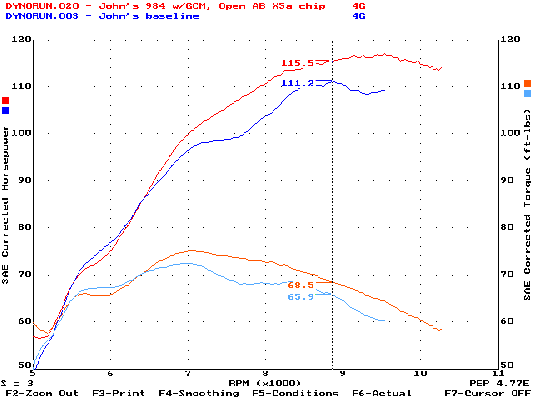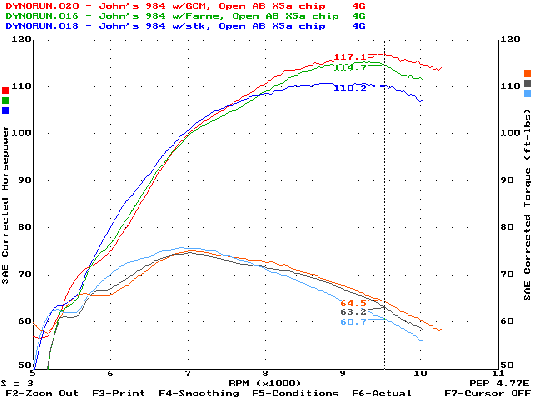
Rather than race his SP3, he decided to build a dedicated race engine, and we decided it should be a 984.
One important consideration was durability. When spending as much $$$ as it takes to build a Ducati engine, you'd like to make it last a while.
Limiting the maximum RPM of the engine would be the first step toward increasing engine life. Stock cams would help increase valve train life, if we could make enough HP to do the job.
Although it may not seem obvious at first, choosing to use any of the 'then-available' alternate cams was a non-choice. Long duration cams give away low and mid-range torque for less torque loss at higher RPM. If we didn't want to rev-the-snot out of it, we'd be left with torque loss in the remaining range.
There were several questions that remained;
At what displacement/rev-range does the exhaust pipe need to be larger?
Would the displacement simply overcome the poor whimpy stock cams?
Why isn't this type of engine used more often?
The last question doesn't rate much thought. 'If everyone jumped into the river, does that mean you have to?'
The first two questions needed to be answered.
I built the engine with 35mm inlet valves (in my opinion, the largest which would work with the stock lift) and 30mm exhaust valves. The ports were re-worked, for a reasonable gain in flow.
BCM 955(96mm) pistons were used, with a 68mm stroke (900SS). The cylinder heads that John had, had been cobbled a little to fit some off-brand piston, so, the combustion chamber volume was larger than I'd like, and it cost him some compression. The final compression ratio is 11.15:1. (Certainly lower than I'd like to see)
Initially, I gave him a chip, that I put together based on Koosmann's 944 testing. That seemed to behave itself, and John put some break-in miles on it and then, raced it at Blackhawk. For the twins race, the bike killed on the line and wouldn't re-start (Corsa battery, oops!!)
John brought the bike in, and we improved the fuel and ignition maps, and tested several different pipes.
A day on the dyno can work wonders!

This represents the work we did on the chip (fuel and ignition timing changes) as well as the pipe testing.
Following, is a comparison of three differnet exhaust systems; Stock 888SPO, Termignoni 'Farne', and a Gio-Ca-Moto 'Spaghetti' system.

A note about the Gio-Ca-Moto system; This distributor has handled several different 'Spaghetti' systems. This system uses a funky aluminum flange and spigots, both of which, warp a lot. But, the design of this system, at least for this configuration, works just fine.
So, the results only apply to this particular system. (I didn't have to say that, did I?)
John finished the season, #1 in Heavyweight Twins in three CCS Regions. Congratulations John!!